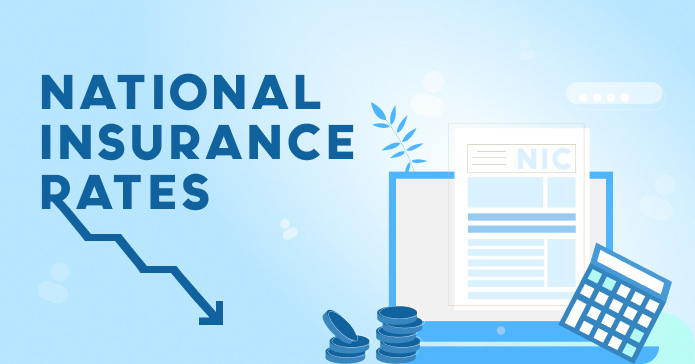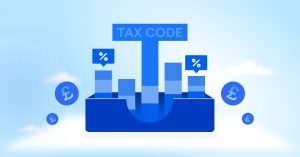It`s safe to say that national insurance contributions are pillars to keep the UK economy on its feet, so little wonder why HMRC is prioritising NICs over many other tax regulations and every year national insurance tax rates change. This affects employees, business owners, contractors and professional individuals in every shape and size.
In this document, we will explore the national insurance rates for 2023/2024 and what it means for different individuals.
What are National Insurance Contributions?
National Insurance Contributions (NICs) are paid by all workers in the UK to fund state benefits such as the State Pension, Maternity Allowance, and Jobseeker's Allowance. These contributions are collected by HM Revenue and Customs (HMRC) and are used to fund various social security programs.
What are the NIC Rates and Thresholds for 2023/2024
Every year, the government announces changes to the national insurance rates that will come into effect from the following tax year. For 2023/2024, there will be a number of changes to both employee and employer contributions.
National Insurance Contribution Classes
Class 1 NIC
Paid by employees and employers on earnings above £533 per month and below £1,048 per month
Class 2 NIC
Paid by self-employed individuals with profits of £12,570 or more a year. Voluntary Class 2 NIC payment is also an option if you are below small profit earnings, which is £6,725.
Class 3 NIC
Voluntary contributions for those who do not qualify for Class 1 or Class 2, are usually preferred by those who want to fill the gap in their national insurance records to be entitled to state pension. Class 3 NIC is £17.45 a week or £907.40 a year.
Class 4 NIC
Paid by self-employed individuals as follows;
| Profits less than £12,570 | £0 |
| Profits between £12,571 and £50,270 | 8% |
| Profits above £50,271 | 2% |
What are the HMRC Rates for 2023/2024?
Class 1 NIC
Employee contributions for Class 1 will increase by 0.5% to 12% for earnings between £9,568 and £50,270 per year. The rate for employer contributions will also increase by 0.5% to 13.8% for the same income bracket.
Class 2 NIC
The government has not announced any changes to Class 2 NIC rates for 2023/2024.
Class 3 NIC
Similar to Class 2 NIC, there will be no changes to the voluntary contribution rates for Class 3.
Class 4 NIC
Under the proposed changes, self-employed individuals will see a slight increase in their contributions. The lower rate of 9% for profits between £12,571 and £50,270 will rise to 9.5%, while the higher rate of 2% for profits above £50,271 will increase to 2.5%.
Why Do NIC Rates Change Every Year?
NIC rates are subject to change each year due to various factors such as government policies, economic conditions and changes in the labour market.
Usually, the main reason for it recently is to ease the pressure on a thinly stretched NHS, especially after COVID. Last year, (April 2022) the NIC rates increased by %1.25 so employees could realise their NIC went from 12% to %13.25 on their payslips. Therefore, Aprils are fun!
The changes aim to ensure that the UK social security system is adequately funded and can continue to provide benefits to those who need it.
What Do These Changes Mean for Different Individuals?
The changes in national insurance rates for 2023/2024 will affect different individuals in different ways.
How does NIC rise will affect employees?
For employees, the increase in employee contributions means a decrease in their take-home pay. Employers will also have to budget for higher employer contributions, which could potentially impact their costs and resources. After April 2023`s new health and social care levy, it has now been added to the tax contribution. Employees will feel the pinch more on their payslips with DONATED NIC at 1.25% in addition to standard national insurance rates.
How does NIC rise will affect self-employed?
For self-employed individuals, the increase in Class 4 NIC rates means they will have to allocate a higher portion of their profits towards contributions. However, these changes are necessary to ensure
Self-employed individuals will see an increase in their national insurance payments, but this also means they will have access to more state benefits such as the State Pension.
We recommend filing self-assessment tax return early to avoid receiving an unexpectedly high self-assessment tax bill by the 31st of January.
How does NIC rise will affect small business owners?
Small business owners who employ staff will see an increase in employer contributions. This could potentially impact their hiring decisions and overall costs for running their business. A payroll software can be a great help to reorganise your staff payments. You can which software is most suitable for your business here
Debitam is ready to help you take the burden off your shoulders in this matter, our team`s expertise in assisting small businesses` payroll worries comes in handy prior to the new tax year, the ask us now
However, it is important to note that these contributions go towards funding state benefits for employees, which can be a valuable resource for small businesses.
Conclusion
Catching up with the new National Insurance Contributions rates has never been more important. The new health and social care levy following April 2023`s mini-budget caused a butterfly effect and affected both employees and employers alike. As employees' tax burden increased, employers faced pay rise demands, therefore it`s vital to get help from an accountant. Our team at Debitam can provide expert advice on how these changes will affect your business and help you navigate through them seamlessly. It`s also essential for self-employed individuals to stay informed about national insurance rates and plan accordingly. We hope this guide to National Insurance Contributions Rates and Thresholds for 2023/2024 helped you plan your next tax year accordingly.













